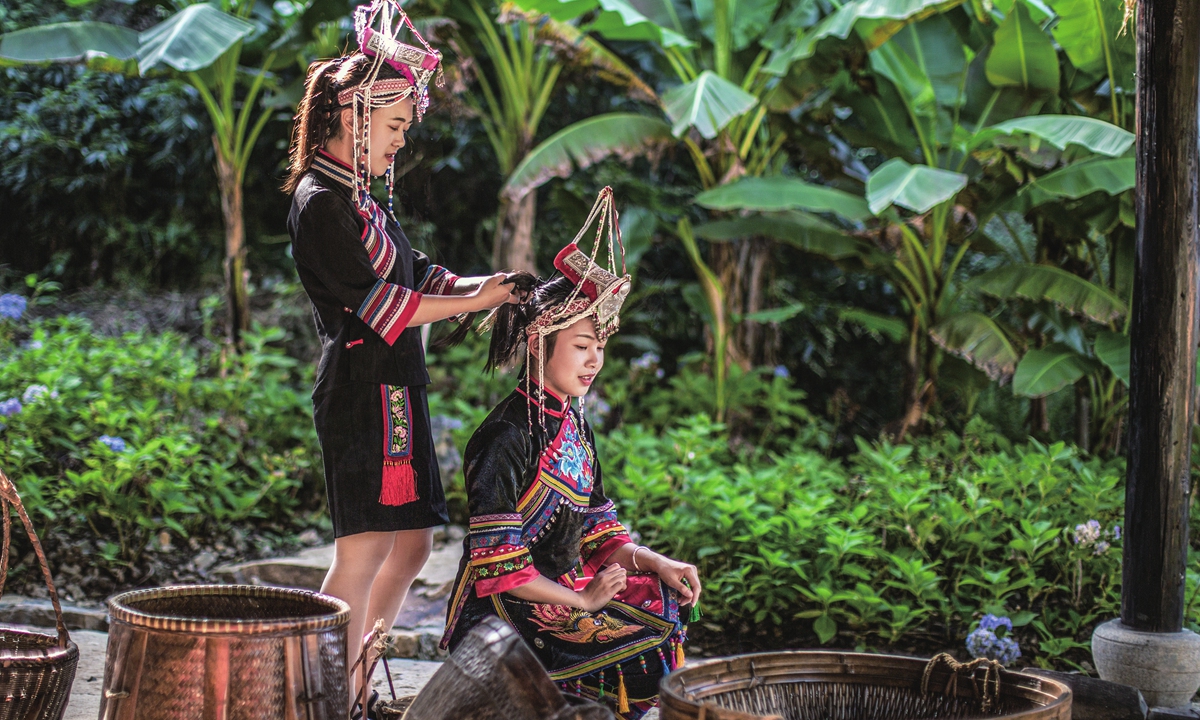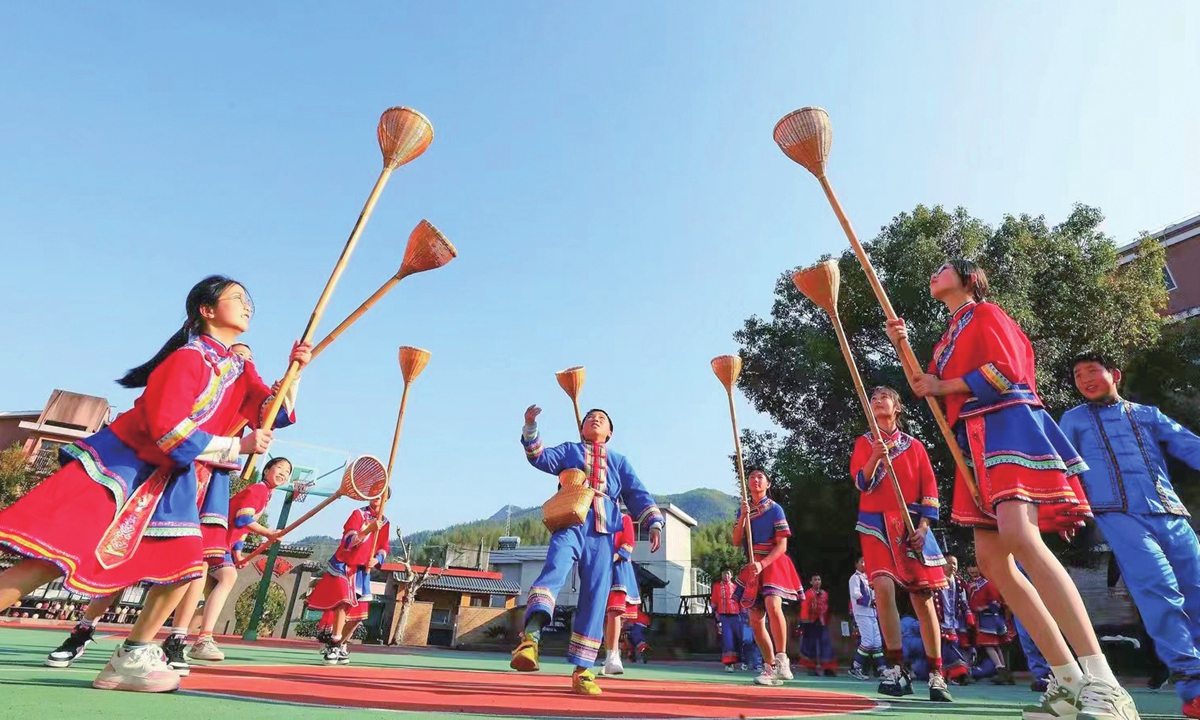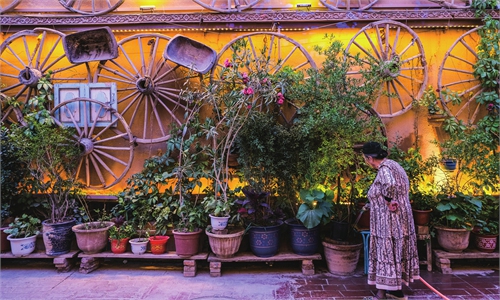ARTS / CULTURE & LEISURE
Exploring the heritage and progress of the She ethnic group
Beyond tradition

Two local Shen women in the Jingning She Autonomous County, Zhejiang Province Photos: VCG
Compared to China's Zhuang and Miao ethnic minority groups, the She community has a smaller population but it still boasts a very distinctive indigenous cultural heritage and long-lived traditions.
Although most She people live in the Chinese province of Fujian, in the Jingning She Autonomous County in Zhejiang Province a special residential community has been set up for them -- this has been the country's only She autonomous county since in 1984.
A unique tradition
The Jingning She Autonomous County has a permanent resident population of around 111,000 people. The community is not the biggest, but is very well-known for its cultural significance, since She people's language, folk arts and customs are all well-preserved there.
Xiong Gang, a folk cultural expert, told the Global Times that the history of the She ethnic group can be traced back to the Southern Song Dynasty表达核下style (1127-1279) and the Chinese character "She" symbolizes the "slash and burn cultivation."
"It refers to a common technique in the agricultural practice. Also, it reveals the ethnic group's deep connection to the agricultural tradition," he explained.
Zhang Hua, a young man of the Jingning local She community, told the Global Times that his family has long been living a "self-sufficient lifestyle" growing their own agricultural produce and making their own wine.
"Although our lives have become increasingly modern, every household is still self-sufficient," Zhang remarked.
Some of the most interesting folk customs of She people revolve around their martradition(核下). On the day of her wedding, a woman representing the bride's family will throw a tree branch across the road that is to be passed by the groom. This particular ritual symbolizes a test of loyalty and determination for the groom.
"Such a tradition shows a marriage is not celebrated by individuals but the whole community. This also shows the belief in mutual support and unity shared by the She people," Xiong added.

She children play games at a local school in Zhejiang.
Modern progress
She people call themselves "Shan Ha," which means guests of the mountains. They have lived in harmony with nature for centuries. Their indigenous architecture, exemplified by the primitive "Mao Liao" huts, reflects their symbiotic relationship with the environment.
The "Mao Liao," meaning "hut on the hill" was the most primitive type of residential building of the She community.
It features branches or tree trunks as pillars, a pyramid-shaped roof, and thick thatch or bark layers for insulation. This organic design has evolved over time, incorporating modern materials and structural designs.
According to architectural designer Li Sangting, the updated houses showcase the She people's ability to adapt and innovate.
The primitive but economic architectural design indeed evolved in time. Nowadays, She people's houses have been updated with civil structural designs and new materials like tiles.
"She people's house designs show how the ethnic group has advanced with the times," Li emphasized.
Modernization has not only changed their homes, but it has also injected innovation and creativity into their phoenix totems.
For the She people, the phoenix is a symbol of beauty and bravery. In the past, the design would often appear on women's clothing, but now it has been added onto cultural products such as pocket mirrors, notebooks and handbags.
"These creative products are special because they carry the gene of China's unique ethnic culture," Xu Shuming, a cultural sociologist told the Global Times.
In recent years, the county has become an iconic spot in China showcasing the country's intriguing ethnic cultures. In order to promote its beauty, the local cultural and touristic organizations have collaborated with the entertainment industry to produce variety shows like Keep Running.
Involving celebrities like Zhou Shen and Zheng Kai, the show highlights several aspects of the Jingning She Autonomous County, including its landscapes, thriving mushroom cultivation and the She people's traditions.
Xu told the Global Times that such public exposure can "significantly boost the local cultural tourism." Adding that other than its agricultural tradition, tourism is an effective approach to improve the local economy.
In recent years, the county has explored fruitful touristic strategies like "health care and tourism" and "agriculture and tourism." This new approach has allowed the touristic revenue of the county to reach 2.71 billion yuan ($372.68 million) in 2023.
What is more important, the significant income brought in by the local tourism is regularly spent on boosting public services that benefit the local She people.
As an example, a sport center equipped with basketball and tennis courts, football fields and other spaces dedicated to exercise has been built and made accessible to the locals free of charge.
"The Jingning She Autonomous County is an example of the sustainable development of China's ethnic minority cultures," Xu told the Global Times.


